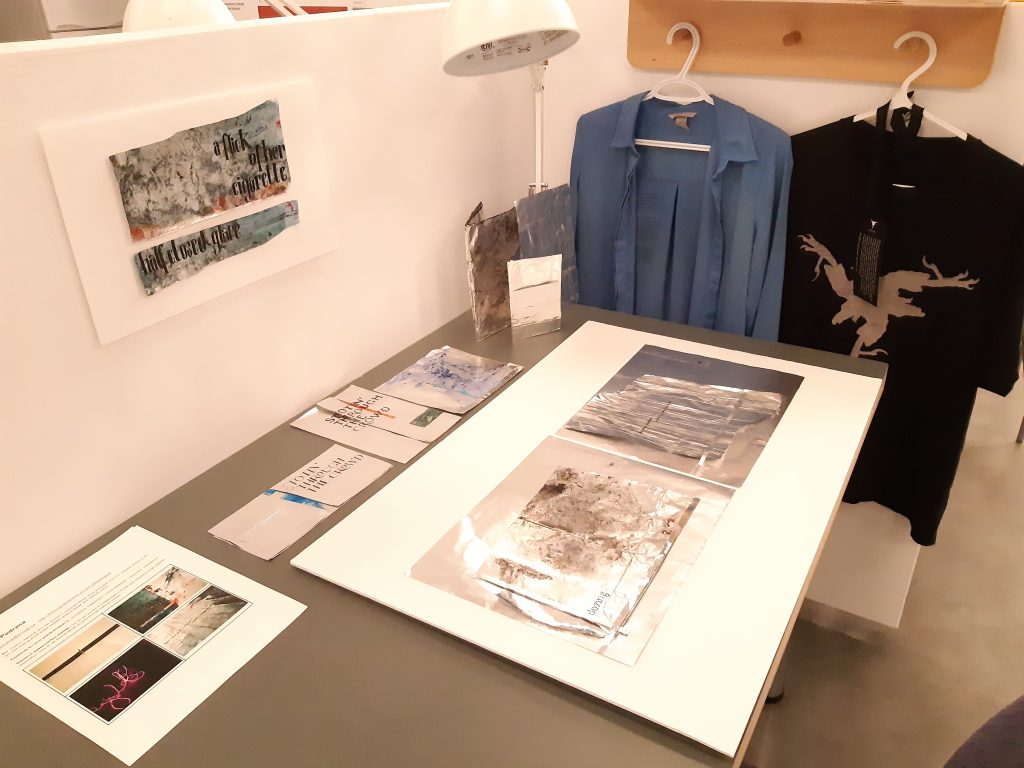Sense of place, Culture & Wellness: Work In Progress
We form connections through storytelling. How we tell the story, in terms of what material, media, form, words (or not) matters.
Whose story we tell matters.

Context/Resarch
I chose two papers to react to: Manzini’s (2013) Resilient Systems and Sustainable Qualities and Verbeek’s (1998) The Things That Matter. The first because it reflects my upbringing and approach to resources and the way you build community. The second spoke to me as an extension to that mindset, imbuing meaning in objects so that you connect to and hold them dear.
For me this project has been a real challenge in a number of ways: getting to know the current field of design; situating myself amongst it; developing my practice as a reaction to this. I am going to investigate materials: what are the qualities of discarded industrial materials such as textiles or metal that you can draw out to create objects that connect to people. What techniques can you use to interact with or change the function of those materials so that they can be used again. Then, from a communication design viewpoint, how do you market this practice as gorgeous use of materials, as opposed to re-using materials, in short, in a high end fashion.
Ideally I would also like to try to create a 3d printed textile as a long term aim. In terms of creating pieces that provoke connection due to their physical texture, colour and form.
Comfort means different things to different people but Ilse Crawford would describe it as providing a sense of dignity. Creating this through careful use of texture, materials, composition of an interior space.
Kate Fletcher talks about the clothes that we feel connected to and the ways in which we can deepen that connection and how, if we do this, we are more likely to take better care of these favoured objects and, by extension, the world around us.
To me reading Fletcher’s (2016) Craft of Use reminded me of a specific Vogue article where a writer wrote about her favourite yellow dress and how many times she had worn it and why. It had become a treasured possession and something she cared for and looked forward to wearing.
https://www.instagram.com/tv/CHiMYFRnSMs/
In Research Methods we are taught to start looking at the slightly terrifying thing in the corner of the room that is our thesis. We talked about how we can start the conversation by saying what we are not looking at. So I am not looking specifically at sustainability because that is already a part of wellness.
I am not looking at the process of publishing a magazine but perhaps the idea of a magazine, or a collection of outputs or designed objects, about the role of materiality, colour, words to help the viewer form a bond…to evoke a fragmentary impression…something like a memory…
Making as Reframing

Reframing the script of a standard garment for a woman in the office (this was my office shirt) from something that signifies menial roles to one that suggests a different type of office, one on board the New Shephard rocket in space. I used the story of Wally Funk, who is the oldest person to reach space, having trained in the 1960s but been denied flight at the time because of her gender.
I wanted to suggest the intimacy of the relationship that we have with clothes by hiding the story inside the back of the shirt so that only the wearer reads the message when she is putting it on. It is an aspirational message and one that should change how she feels when she wears the garment.
Making as Holder of Memory

Looking at clothing as mementos, holder of memories, ways of belonging to subcultures. This time I wanted the interaction with the clothing to be different, to be a reminder of what we take part in when we go to gigs, when we support a part of culture.

Open Studio
The clothing below is the final work for our Discourse prompt where we discussed ideas of storytelling, mementoes, objects holding memories and reframing through making.




Reflections
Looking back at this I would like to explore both the reframing and garment as holder of memory ideas. I would also like to explore the various ways of making a garment but it would have to be strongly related to communicating a story. Hussein Chalayan works within this sphere, creating oversized labels for clothing to encourage the wearer to reflect on their clothing. I feel that there is a space between city people, (thank you Cameron for the Fred Herzog reference, his work and the air of hidden in each image is beautiful), garments, how we wear them and storytelling.
